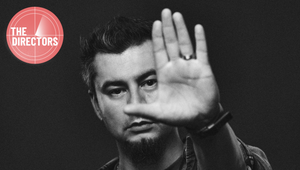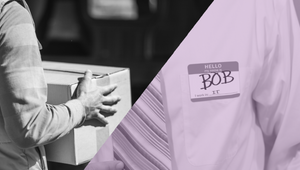
Adobe MAX 2024: How Design Will Take Centre Stage in the Controls Era

On stage at Adobe MAX, experts tackled the biggest question for creatives and designers today: what is our role in the AI age?
The answer is clear. Our role is to be emboldened.
It’s time to move beyond the Prompt Era and into the Controls Era, says Scott Belsky, Chief Strategy Officer – Adobe. In other words, stop being mere participants in the creative changes we’re experiencing (a phase where AI, on occasion, cheapened or undermined the craft and discipline of design), and instead, fluently embrace AI to enhance experimentation, efficiency and impact.
Control + craft = AI acceleration for creatives
The world of design was evolving long before AI came along. Yet, we are only just discovering the potential of new design paradigms being presented with AI.
The opportunity with AI today is, to direct our design better (take control) in order to present and produce better work (craft).
Despite AI taking root in the creative process, the opportunity also lies in the acceleration of human-centric design. Designers can now give up ownership of secondary tasks - such as reformatting layouts, creating design variations, and experimenting with multiple design tweaks – to focus on baking-in empathy and crafting experiences that resonate deeply with people, which AI cannot.
This process is made more powerful with the use of new tools, like Firefly, Adobe's generative machine learning model. Its latest features give OLIVER's designers more bite by integrating GenAI into creative workflows, enabling them to achieve more with greater impact. Work is crafted, not simply churned. And it’s often right first time.
Designers are in partnership with AI today, collaborating to generate ideas, predict trends, and even prototype. This human-AI alliance augments and accelerates innovation for our clients.
Here is a list of the best design-enabling tools and processes from this year’s Adobe MAX:
- Firefly illuminates new creative pathways
Firefly’s evolution brings faster, more accurate renditions, introducing text-to-motion capabilities and advanced editing controls. Designers can now upload visual references, enriching the creative input and expanding possibilities beyond mere text prompts.
- Artistic vision in less steps with Generative Fill
The enhanced Generative Fill gives designers unprecedented control for recrafting, allowing them to ‘paint’ with AI. It intuitively understands intent, helping reimagine scenes with new filters for object removal, lighting adjustments, and style experiments. Sadly, the ‘Distraction Removal’ tool doesn’t work on kids... yet.
- Safety first
Adobe continues to lead the market by training AI on rights-cleared images. With Content Credentials technology, our clients can rest easy knowing our creations are commercially safe and ethically sound.
- Empowering on-brand ecosystems
New tools focus on building brand-centric environments, with enhanced template, locking down elements and guardrail setups. This empowers non-creatives to produce impactful content quickly, freeing our design teams to tackle more complex creative challenges.
- Collaboration station
Project Concept & Generative Workspace (both in beta), promise to bring our collective creative brains closer in real-time. These tools help designers ideate, brainstorm, and iterate concepts simultaneously. In Pencil we are already doing this in the platform, with Firefly integrated and the upcoming ability to effortlessly dive in and out programmes like AfterEffects it’s helping us deliver to market with greater speed and depth.
- Substance session
There are probably quite a few of these in Miami, however the one I was at was both inspiring and legal. The new Adobe Substance 3D Viewer integrates seamlessly with Photoshop, allowing designers to work with 3D files as Smart Objects. Meanwhile, Project Neo is making 3D creation accessible to 2D designers, opening new realms of visualisation and experimentation.
- Ethics and inclusion
With AI, designers can make better ethical considerations, such as ensuring inclusivity, avoiding biases, and maintaining transparency. It is able to analyse diverse datasets, meaning that designers are more equipped to include accessibility features for addressing broader user needs.
For a deeper dive into, explore all MAX sessions on-demand here.















